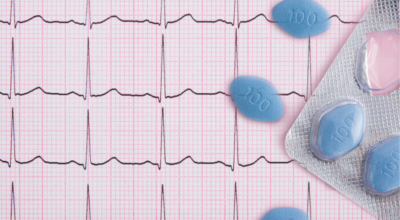10 traits you may not know can be tied to genetics
Published 5:30 pm Wednesday, June 15, 2022
Canva
10 traits you may not know can be tied to genetics
Although the longstanding debate between nature versus nurture is often framed as one being dominant over the other, scientists today know it’s not that simple: Nature and nurture interact in complex ways.
You probably already know that your parents and family history play a big role in determining your physical features, from the color of your hair to your height. But did you know that genetics also has an influence on some of your personality traits too? To create a list of traits that have some of their origins in genetics, Top10.com collected information from scientific journals such as Nature Genetics and the Proceedings of the National Academy of Sciences.
Today, more is often known about the genetic component of inheritable medical conditions such as hemophilia, a blood clotting disorder, and Huntington’s disease, a degenerative condition affecting the brain’s nerve cells. But according to a study published in Nature Genetics, more is being discovered about how traits like extraversion, creativity, and compassion, may also have correlations to specific genetic variants.
We’ve only scratched the surface of what genetics can tell us about who we are, but researchers are hopeful that with more study, we’ll unlock more about how psychological traits are impacted by genetics and environmental factors. Here are 10 physical and psychological traits that researchers have determined have some of their origins linked to genetics.
![]()
Canva
Facial expressions
A 2006 study conducted in Israel found facial expressions associated with concentration, sadness, and anger can be inherited. Researchers videotaped 21 people born blind and 30 of their relatives born sighted. Participants were asked to solve challenging puzzles, listen to a disgusting story, recount a sad or joyful personal experience, and respond to a silly question. Those who were blind had very similar facial expressions to their sighted relatives when concentrating or feeling angry or sad. Moreover, a computer program able to recognize similar facial expressions correctly matched blind participants with their relatives 80% of the time.
sruilk // Shutterstock
Deviated septum
The septum is the bone and cartilage in the nasal cavity that divides it into two nostrils. The septum can become deviated, or crooked, making it difficult to breathe. A deviated septum is most commonly the result of trauma, such as a blow to the face. However, it is also associated with conditions that affect connective tissue, such as Marfan syndrome and Ehlers-Danlos syndrome, both of which are genetic.
LightField Studios // Shutterstock
Children’s insomnia
A team led by researchers at the University of Basel in Switzerland found maternal symptoms of insomnia were associated with a child’s sleep pattern as objectively measured by in-home electroencephalography. Maternal insomnia was associated with less total sleep time, more stage 2 sleep, less slow-wave sleep, a later time to sleep onset, and a later wake time for their child. The insomnia symptoms of both parents influenced their perceptions of their children’s refusal to adhere to a designated bedtime, duration of sleep, sleep anxiety, incidents of waking up during the night, and/or daytime sleepiness.
Dave Hogan // Getty Images
Widow’s peak
A V-shaped frontal hairline, often called a widow’s peak, is a morphogenetic trait inherited by people from their parents. It has also been associated with a number of inherited genetic conditions. Reports also exist of a link between a widow’s peak and craniofacial clefts, or malformations of part of the face. However, the association between a widow’s peak and the severity of these conditions has not yet been defined.
santypan // Shutterstock
Caffeine response
Every person responds differently to caffeine. Scientific evidence that these responses may be genetic is increasing. Genetic factors may directly influence individual responses by changing acute or chronic reactions to caffeine. These factors may also play an indirect role by altering the psychological or physiological processes related to the effects of caffeine, such as sensitivity to anxiety and the generally reinforcing effects of substance use. Genes can also affect the body’s response to long-term caffeine use.
Vadym Ivanov // Shutterstock
Sensitivity to bitter food
About one-fourth of the population has a taste receptor gene, TAS2R38, that can make foods such as leafy greens and hoppy beers taste bitter. The perceived bitterness of these foods varies among individuals and depends on how strongly compounds in foods bind to the receptor. In a 2014 study of 93 Caucasian participants, TAS2R38 was associated with a bitter taste on the papillae of the tongue when it was swabbed with ethyl alcohol. The researchers concluded that genetic variations in the TAS2Rs gene may explain why alcoholic beverages taste bitter to some people but not to others.
MIA Studio // Shutterstock
Sneezing in the sun
Autosomal Dominant Compelling Helioopthalmic Outburst syndrome, appropriately known as ACHOO syndrome, is characterized by sneezing after sudden exposure to bright light, usually strong sunlight. The cause of ACHOO syndrome is not well understood. However, researchers do know it is inherited as an autosomal dominant trait, so if one parent is affected, a child has half a chance of inheriting ACHOO syndrome.
Canva
Optimism
The oxytocin receptor gene, also known as the OXTR gene, codes for the oxytocin receptor, to which the hormone oxytocin binds and exerts its effects throughout the body. Studies have linked part of the OXTR gene to psychological resources including optimism. The findings of a 2011 study suggest those who inherited a certain variation of the OXTR gene from both parents are more optimistic than those who inherited the variation from one parent or not at all.
Canva
Pain tolerance
In 2014, researchers presented a paper at the American Academy of Neurology’s annual meeting identifying four genes associated with pain perception: DRD1, DRD2, COMT, and OPRK1. The researchers enrolled almost 2,800 people who took opioids for chronic pain in their study. The DRD1 gene was 33% more prevalent among those with low pain perception than those with high pain perception. The COMT gene was 25% more common among those with moderate pain perception compared to those with high pain perception, and the OPRK1 gene was 19% more common. Among those with high pain perception, the DRD2 gene was 25% more prevalent compared to those with moderate pain perception.
Identifying these genes can help physicians better understand why some of their patients perceive pain differently than others, according to author Tobore Onojighofia, a member of the American Academy of Neurology and scientist with Proove Biosciences.
Canva
Life satisfaction
A study of twins published in 2012 by an international team of researchers found genetics explain about 33% of the variation in reported life satisfaction. Although at first the researchers found people with a certain variant of the 5-HTT serotonin transporter gene reported greater life satisfaction, they had difficulty replicating their results in an independent sample. The researchers said their findings suggest more work is necessary to better understand the relationship between the 5-HTT gene variant and life satisfaction.
This story originally appeared on Top10.com and was produced and
distributed in partnership with Stacker Studio.
















